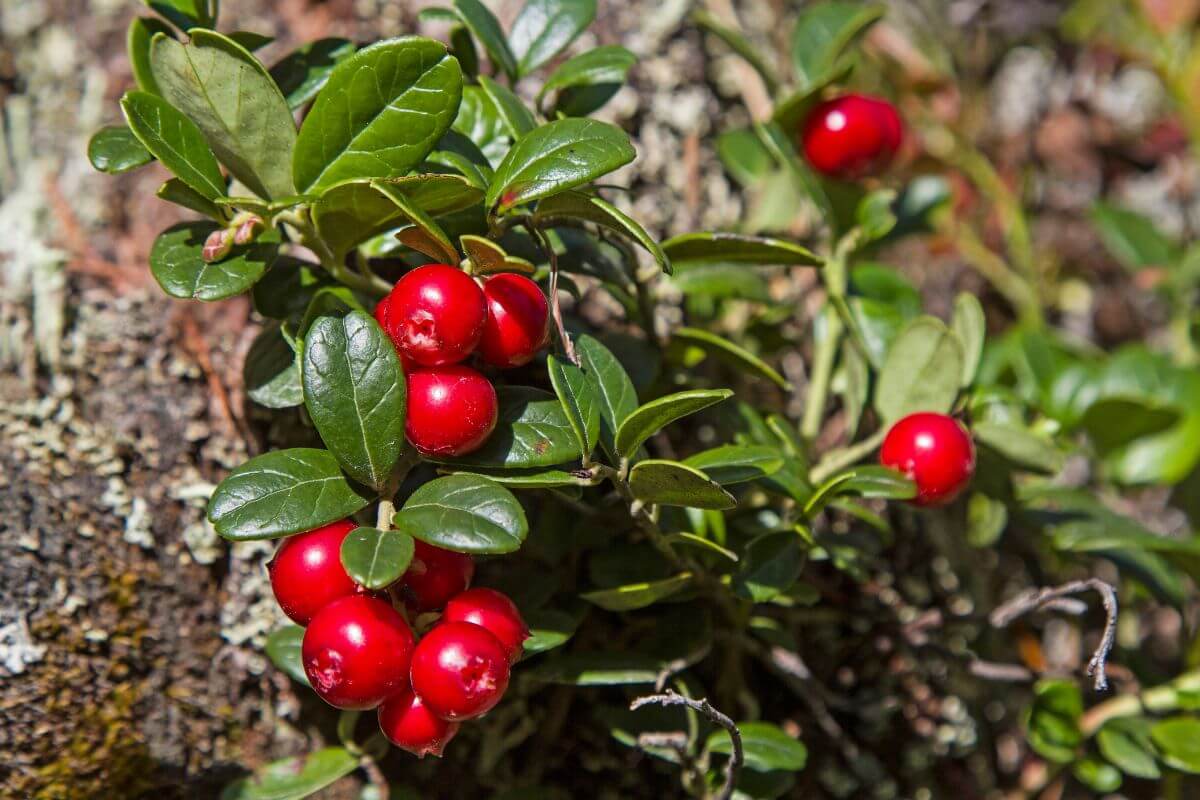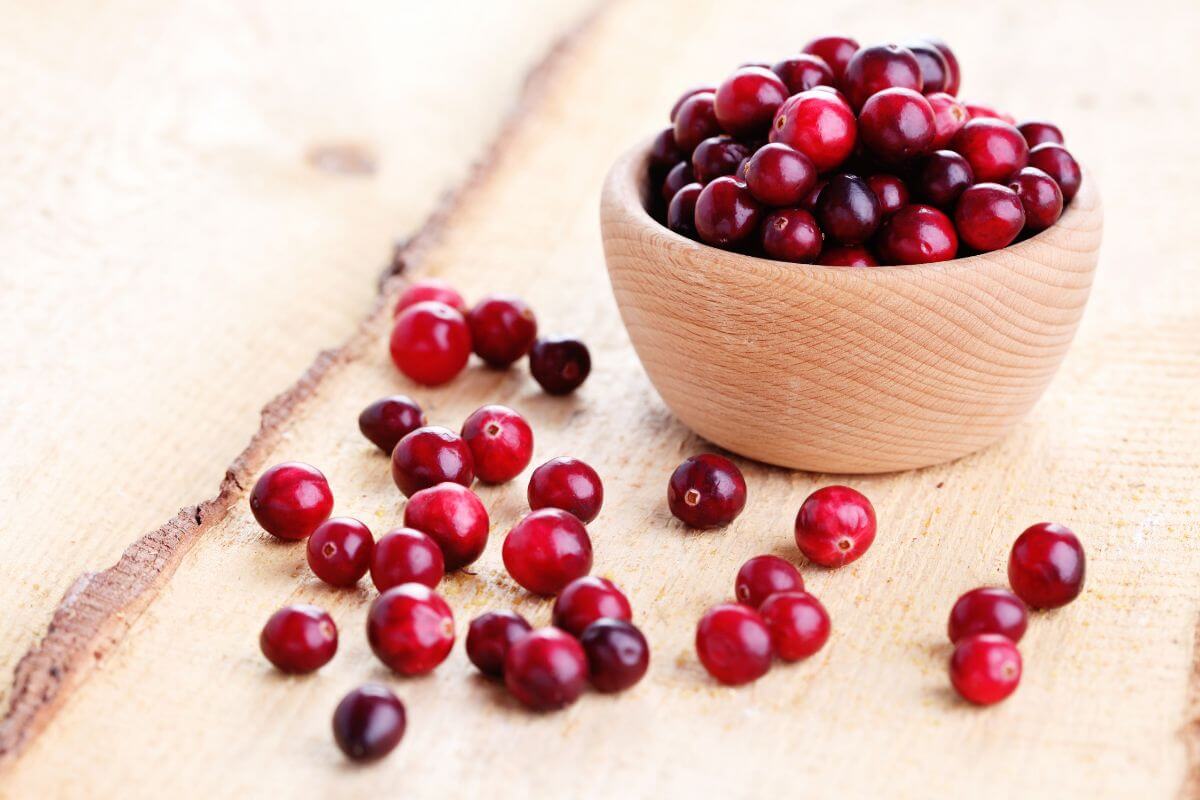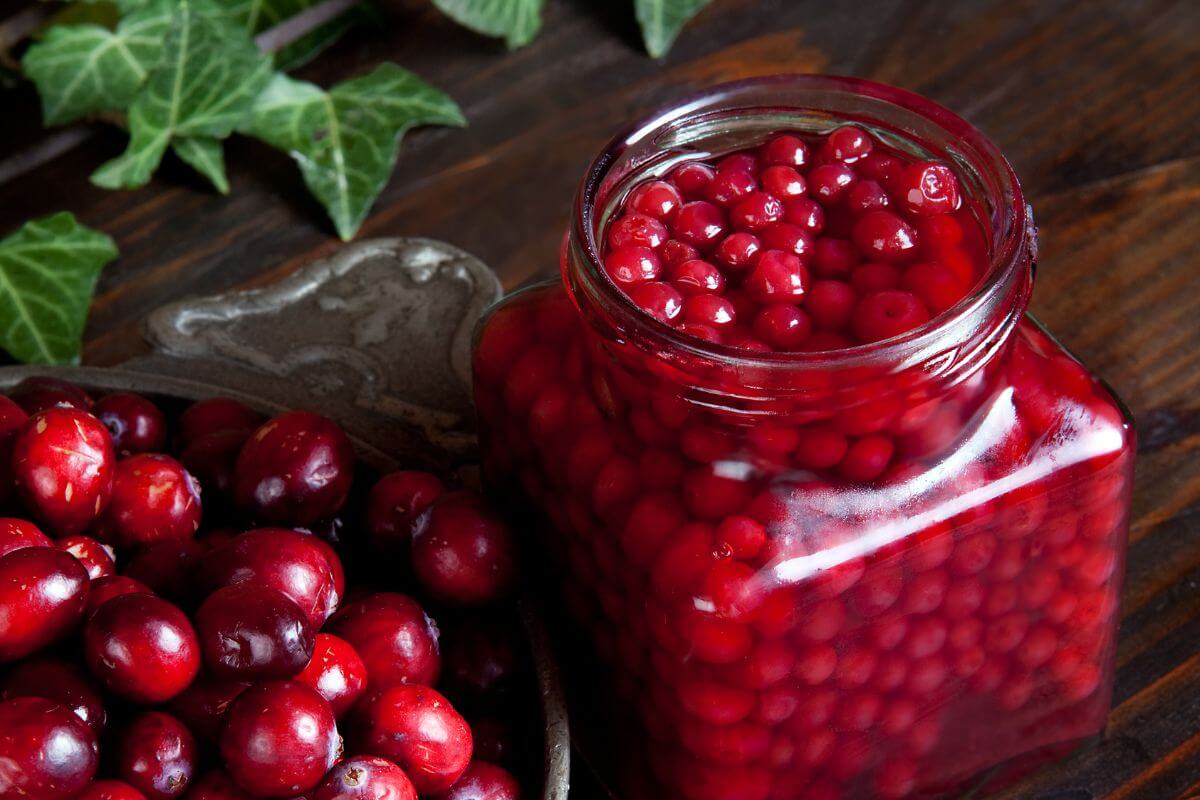Cranberry juice has become a staple drink for millions of Americans. However, did you know cranberries are actually man-made?
There are various man-made fruits and vegetables that people didn’t know are man-made. This article will cover cranberry origins and how they were made by humans.
History of Cranberries

The cranberry is a member of the genus Vaccinium and Ericaceae family. They are native to northeastern bogs and swamps in North America, but can be found globally, from tropical to polar regions.
Cranberry plants are woody and low growing, often described as dwarf shrubs that are evergreens or on runner vines. The cranberry plants relies on pollination by bees as the weight of pollination grains is too much for wind pollination.
Receding, melting glaciers have assisted in the creation of bogs that have evolved into perfect breeding grounds for cranberries globally.
Known as sasumuneash, wild cranberries were harvested for some 12,000 years and enjoyed by Native Americans. Sasumuneash was eaten and used in traditional healing for a variety of maladies.
Long ago, in the 1500s and 1600s when colonists came to the shores of North America, they found cranberries among the New World’s riches. It is believed that Native Americans introduced the colonists to these berries.
When colonists arrived, some were familiar with cranberries as a European variety grown in Southern England’s bogs, called “craneberries.” Massachusetts, which has many bogs, became the first location for cultivation.
Cranberry cultivation started in 1816, when Massachusetts Revolutionary War veteran, Captain Henry Hall, discovered that the wild cranberries that grew spontaneously in his bogs yielded better and more fruit when sand blew over them. Captain Hall began to transplant cranberry plants and then spread sand over them.
Cranberry cuttings were transported to other locations, and when word of Hall’s technique became known, many others followed suit. That led to increased cultivation and harvesting, with many people converting wetlands, wet meadows, and even peat swamps into cranberry bogs.
By 1871, farmers were able to harvest as much as 40,000 acres of cranberries annually. A century later, at the beginning of the 1900s, the cranberry harvest was a vital part of the Massachusetts economy. Many schoolchildren were even excused from school to work at the harvest.
Are Cranberries Man-Made?

As you can see from its origins, cranberries have existed in nature for thousands of years in their wild form.
But are cranberries man-made? If man-made means created in a laboratory, then the answer is No.
Does man-made refer to improving and growing cranberries through various agricultural techniques? The answer is a definite Yes.
Cranberries are man-made in the sense that humans performed selective breeding to influence and cultivate cranberries. That growing technique allows farmers and gardeners to grow cranberries with specific traits that they want.
Thanks to vine tinkering and transporting cuttings to other locations, the foundations of a new industry were laid.
Selective Breeding of Cranberries
The “selective breeding” process is what most people refer to when they ask if vegetables or fruits are “man-made.”
Through selective breeding, vegetables and fruits can be bred to improve specific characteristics such as size and taste. Selective breeding has also been used to increase crop yields.
The tart taste of cranberries was already there to begin with naturally, but it was selectively bred through generations for the signature flavor we have now. That flavor comes from the lower sugar amount and helps to contain the blood sugar in our bodies.
Seeds, cuttings, layering, and grafting can be used as techniques for selective breeding and propagation of cranberries. Historically, farmers would take the best cranberries and breed them for a better, stronger, healthier, and tastier cranberry.
Selective breeding often takes decades, centuries, or even thousands of years to obtain the desired traits because they need to go through many generations.
Human Intervention of Cranberries
By the end of the 1800s, human invention played a role in the development of today’s cranberry. Cranberry scoops made from wood began to replace hand-picking during harvest.
The global expansion created new requirements for the industry. New companies and co-ops were established. Grading systems for quality, distribution transportation, as well as cranberry breeding for taste evolved.
Zero-mile food movements as well as a demand for both sweeter and sourer cranberries have left the door wide open for future innovation, selective breeding, and product development.
Cranberries and Genetic Modifications
Cranberries are not genetically modified organisms (GMO) as scientists are not in labs changing their genes.
There are geneticists that consider cranberries to be a natural GMO. They call cranberry plants transgenic. If genetic material from a contaminant like a fungus or a bacterium manages to enter the cranberry plant genome, then the plant is recognized as transgenic.
Certain bacteria are capable of sending small fragments of their own DNA into plant cells and genetic colonization follows. Summed up, mankind has constantly been exposed to natural GMOs throughout history.
Cranberry Cultivation
Because cranberries are grown in wetlands, bogs, or similar, most people may think that cranberries are grown in water. But cranberries nowadays grow on long trailing vines in bogs that are man-made.
Bogs feature layers of peat, sand, clay, and gravel. These vines are exceptionally resilient and can survive, if undamaged, for decades.
Some cranberry vines in Massachusetts are said to be more than 150 years old.
Cranberry Uses and Health Benefits

Cranberries are delicious, but did you know they are also very nutritious?
Cranberry juice has become a staple drink for millions of Americans. Cranberries are also often used in cooking because of their tart flavor and bright color.
Cranberries are rich in antioxidants, vitamins, minerals, fiber, and phytochemicals. These nutrients provide numerous health benefits, including protection against cancer, heart disease, diabetes, and other diseases.
Cranberries contain high levels of vitamin C, fiber, antioxidants, and minerals such as potassium, calcium, magnesium, iron, copper, zinc, manganese, phosphorus, and selenium. Cranberries are also rich in polyphenols, which are compounds that act as powerful antioxidants.
Man-Made Cranberries Final Thoughts
Cranberries are appreciated as a source of both antioxidants and nutrients, and they are increasingly in demand. A truly resilient and unique fruit, but it needs special conditions like fresh water and peat soil to survive and thrive.
Cranberries distinguish themselves because they are one of the very few commercial fruits that are native to North America. Nature gave us cranberries, but their overwhelming success is thanks to “man-made” intervention!
Learn more about other man-made fruits and vegetables:
- Broccoli is Man Made
- Are Carrots Man-Made or Natural?
- Is Kale Man-Made or Natural?
- Is Asparagus Man-Made or Natural?
- Organic Vegetable Garden Tips
Man-Made Cranberries FAQs
What is the origin of cranberries?
Wild cranberries have been harvested for 12,000 years by Native Americans in North America. They were eaten and used to heal a variety of medical issues by them. When colonists arrived in North America in the 16th century, the Native Americans introduced the colonists to cranberries.
Do cranberries grow in water?
No, cranberries don’t grow in water, even though they grow best in bogs and other areas with lots of water. Cranberry plants thrive in acidic peat soil that’s a defining characteristic of bogs.
Why are cranberries bad for you?
Cranberries can be bad for you if consumed in large quantities. They need to be consumed in moderation because of their high acidic content. If cranberries are excessively consumed, it can lead to an upset stomach and diarrhea. The risk of kidney stones can also increase in some.
Is it OK to eat raw cranberries?
Yes, raw cranberries can be eaten, but it’s not recommended. Raw cranberries contain high acidic content and will cause upset stomachs and even damage to your teeth if the juices are not washed off.
What is a Cranberry Bog?
A cranberry bog is a natural habitat where cranberries grow wild. These plants are native to North America. They are found in swampy areas along rivers, lakes, and streams. They are usually found near saltwater marshes with acidic soil and full sun.

